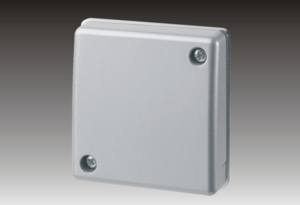PRODUCTS
Anti burglary alarm systems
ANTI BURGLARY ALARM DEVICES
Freestanding safes, ATM Safes , Secure cabinets, Vault rooms….
COMPONENTS OF ANTI BURGLARY ALARM DEVICES:
1. SEISMIC DETECTOR
Programmable seismic detector with advanced functionality for the:
- Around-the-clock monitoring of safes, night deposits, automatic teller machines (ATM) etc.
- 4 m operating radius on conrete → 50 m2 coverage area.
- High performance »SENSTECTM« bimorph sensor and micro-controller-based signal Evaluation
with highest sensitivity even to oxygen lance attacks. - Highest immunity to false alarms with flexible settings, digital filters and sophisticated algorithms.
- Easy adjustable sensitivity according to specific applications
(3 fixed DIP switches and 1 individual DIP setting programmable with SensTool software). - Easy, fast and flexible installation (2 screws, test point and test LED).
- Smallest, slimmest and most modern design on the market.
- Lowest power consumption.
Effective. Reliable recognition of attacks is ensured with explosives or attempted entry using modern tools,
such as diamond-tipped drills, mechanical and hydraulic pressure tools, flame cutters, thermal-lancers or
water jet on safes, automatic teller machines and night deposits.
Highly professional. The patented SENSTEC® sensor and digital signal processing evaluates a selected narrow frequency band to ensure reliable detection. This comprehensive protection is immune to environmental influences including air and structure borne noise from external disturbance sources.
Versatile in application. The low-profile design makes it easy to install. Predefined settings allow to be quickly
set for all common applications. Optional SensTool software enables modification of default operating
parameters and monitoring of current detector performance.
2. SNAP OFF DETECTOR / TEAR OFF DETECTOR / FORCED REMOVAL DETECTOR
Snap off detectors are intended for early detection of burglary attempts when the burglars try to remove
the entire safe.
The purpose of the attempt is to snap off the safe from the anchoring fixation and to take the safe to location
where the burglars can work undisturbed to remove the contents of the safe.
Snap off detectors are placed under the head or the nut of one of the anchoring screws.
Attempts to snap off the safe from its mounting break the detector and trigger the alarm.
In spite of the triggered alarm the anchoring screws still prevent removal of the safe.
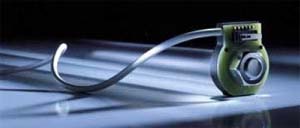
3. MAGNETIC DOOR CONTACT
Magnetic door contact is intended to control the cabinets or the position of the safes door.
It detects two positions: “open” and “closed”.
Magnetic contact is composed of a contact on the housing of the safe and of a permanent magnet, which is usually installed on the door.
In the door position “closed” the permanent magnet and the contact creates a closed electrical circuit. If the door opens when the central alarm system is on, then this circuit is interrupted and the alarm triggers itself.
There are usually two contacts built into ATM safes, in other cases one is considered sufficient. The second contact is not connected to the central alarm system, it detects opening of the door when the central alarm system is off.
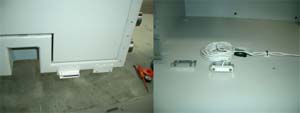
4. LOCK BOLT CONTACT
Lock bolt contact is intended to control the position of the lock bolt, which indirectly through the bolting mechanism
locks the security safe.
Contacts detect two positions of lock bolts: “locked” and “unlocked”.
When the bolt is in the “locked” position the contact creates a closed circuit in the alarm system.
By unlocking the lock when the anti-burglary alarm system is on, the circuit is interrupted and the alarm triggers itself.
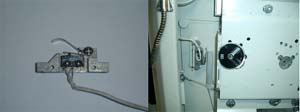
5. BLOCKING ELEMENT
Blocking element for forced lock control is intended to provide additional mechanical protection of the security safe door.
Between the blocking elements and the bolt, a rigid connection is created when the lock is in the “locked” position.
When the central alarm system is on, the blocking element activates itself and through the lever blocks any movements of the lock bolt.
At that time the automatic opening of the door or the lock is not possible.
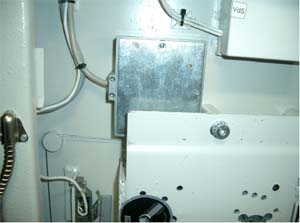
6. DISTRIBUTOR
The purpose of electrical distributors is to connect different alarm components and connection
to the central alarm station.
The security purpose of distributor control is to detect unauthorized opening of the distributor cover.
When the distributor cover is closed or screwed then a closed circuit is created in the alarm installation.
When the cover of the distributor is screwed off and the alarm system is on, the central circuit is interrupted
and triggers the alarm.
In security cabinets, safes and ATM safes two distributors are installed; one in the door and the second one
in the body.
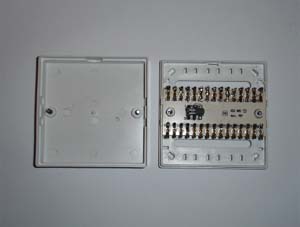
7. ALARM STATION
Alarm station is receiving, judging and presenting messages and information on burglary attempts, sabotage and disturbances on security safes.
Messages and information come from detectors and contacts that are installed in the security safe and will be transmitted to the alarm station.
Central Alarm Station is not located in the security safe, but in a different place.
Central Alarm Station is treated separately, because it normally connects multiple secure cabinets, safes,
ATM safes and vault rooms.

